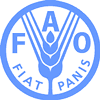 |
|||||||||
|
|||||||||||||||||||
|
|
Bird Flu Continues to Pose a Global Threat Although concerted international action has successfully eliminated the deadly H5N1 avian influenza virus from poultry in almost all the 63 countries it infected at the peak of the world outbreak in 2006, it persists in five nations and thus poses a continuing threat to global animal and human health.
Speaking before the opening of an International Ministerial Conference on Animal and Pandemic Influenza in Hanoi next Monday, FAO’s Chief Veterinary Officer Dr Juan Lubroth said that despite the considerable success achieved against H5N1 it was entrenched in Egypt, Indonesia, Bangladesh, Vietnam and China. “The progressive control of H5N1 in such countries remains an international priority,” Lubroth said. “Though public attention shifted to the H1N1 influenza pandemic for most of 2009, H5N1 continues to be a serious menace. $20 billion damage “We should not forget that it has killed 292 humans, killed or forced the culling of more than 260 million birds, caused an estimated $20 billion of economic damage across the globe and devastated livelihoods at the family-farm level. As long as it is present in even one country, there is still a public health risk to be taken seriously.” The H5N1 strain of avian influenza remains established in places where tens of millions of free-ranging domestic ducks are present, significant industrial broiler production exists together with live bird markets, and where human and animal densities are high. “Where those circumstances are present finding effective solutions remains a major challenge,” Lubroth said. He noted that the very process of economic and population growth, including intensified agricultural production, fostered the emergence of new infectious diseases as ever larger numbers of animals and humans occupied delicate ecosystems. Humans at risk “It is clear that humans will continue to become exposed to a variety of influenza viruses originating in animals, and even if the severity and magnitude of resulting outbreaks remains unpredictable we know that pressures are building,” he said. FAO, WHO and the Paris-based World Organization for Animal Health (OIE), who led international efforts against H5N1, should take a leading role in finding a definitive solution to the problem. At the same time the three agencies should also collaborate to strengthen international defences against emerging infectious diseases, Lubroth added. The Hanoi ministerial conference is intended to marshal international cooperation against future infectious diseases drawing on experience gained in responses to pandemic A/H1N1 influenza and H5N1 avian influenza. Crisis-hopping “We must stop hopping from one crisis situation to the next,” Lubroth said. “We have to do a better job of forecasting and monitoring the drivers that promote the emergence and spread of diseases, and institute improved risk management. “We must be able to tackle problems at source before they become regional, continental or global threats.” As well as discussing the H1N1 pandemic and H5N1, the Hanoi conference will seek to advance the UN-led “One World, One Health” Strategic Framework for reducing the risks of emerging infectious diseases.
|
||||||||||||||||||

|
|
||||||||||||||||||
| home | agri-services | pedigree
pen | news | dairy | beef | machinery property | organisations | site map |
|||||||||||||||||||

